Ideal Pond Water Parameters
Pond water parameters are often overlooked. Yet, having the correct pond water parameters is one of the most important factors for a successful, healthy pond. Correct parameters mean your fish will be healthy. Aerobic bacteria can do their job properly, and finally, any pond plants added will contribute positively to the condition of the pond.
Continue reading to find out the correct water parameters to achieve a healthy, thriving pond…
Jump to a section:
Correct Oxygen Levels in Ponds • How to Increase Oxygen Levels in your Pond • What Should Pond pH be? • How pH affects Ponds • Testing pH • What are KH Levels? • Ammonia, Nitrites and Nitrates • Phosphate Levels • Summary
Correct Oxygen Levels in Ponds
The maximum amount of dissolved oxygen that can physically be held in water is 18.0mg/L. The minimum that you should let that figure get to is 6.0mg/L. Anything lower than this and your fish will start to suffer. Some fish will be able to tolerate lower oxygen levels than this. However, it is advisable to try and keep the minimum at 6.0mg/L. Cold water can hold almost twice as much oxygen as warm water. So keep a close eye on your pond’s oxygen levels throughout the summer months.
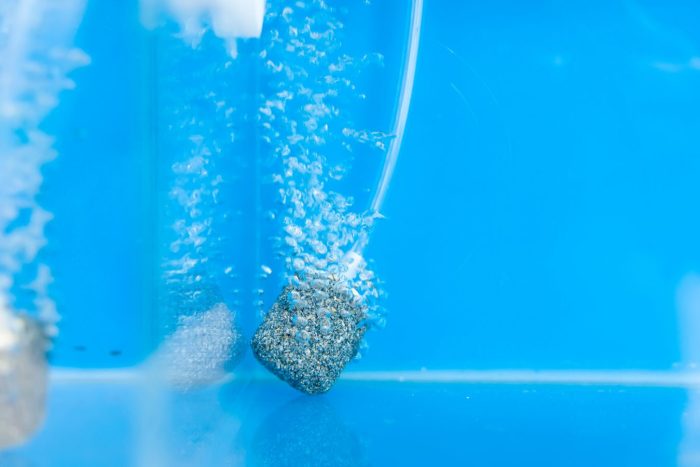
How to Increase Oxygen Levels in your Pond
There are a couple of things you can do to maximise oxygen levels in your pond.
– Keep plenty of oxygenating plants
– Install a waterfall as this will bring in oxygen with the water
– Install an air stone or fountain to inject further oxygen
When conducting a partial pond water change, test oxygen levels first. This is important because tap water naturally contains very low levels of oxygen.
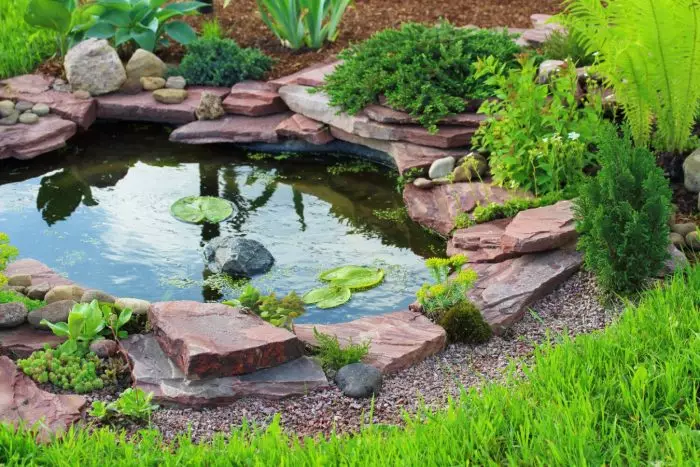
What Should Pond pH Be?
Ph levels in ponds are very important. Ph is a numeric scale, used to determine the acidity or alkalinity of a substance, in this case, pond water. The scale ranges from 1-14 with 7 being neutral. 1 being the most acidic and 14 being the most basic, or highest alkaline level. Battery acid has a pH of 1.0 whilst Lye (used in household drain cleaners) has a pH of 13.5.
Both can be just as dangerous as the other. We recommend keeping pH levels in the pond somewhere between 7.5 pH and 8.5 pH. This is the perfect balance for not only the bacteria in our products but also the inhabitants of your pond. This gives you a good indication of why keeping a balanced level and avoiding a pond pH crash is so important.
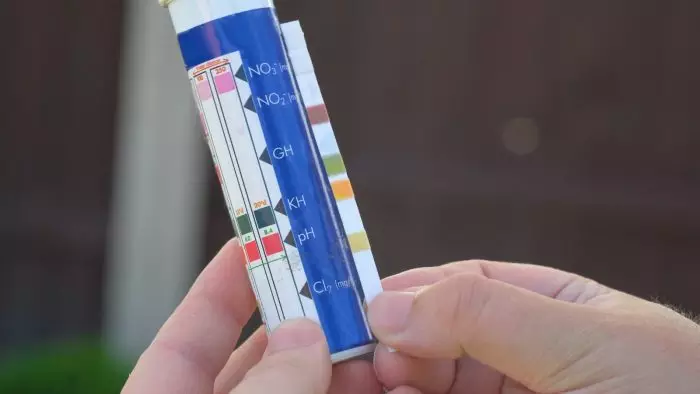
How pH affects Ponds
Now that we have gone over what pH is, let’s cover why it affects your pond. That is, what your pH should be and how to change your pH level. A fish’s natural pH level is 7.4. So, it’s best practice to keep your pond as close to this level as possible. Fish can tolerate slight fluctuations in the acidity or alkalinity of the water. However, only down to about 6.8 and up to 8.6.
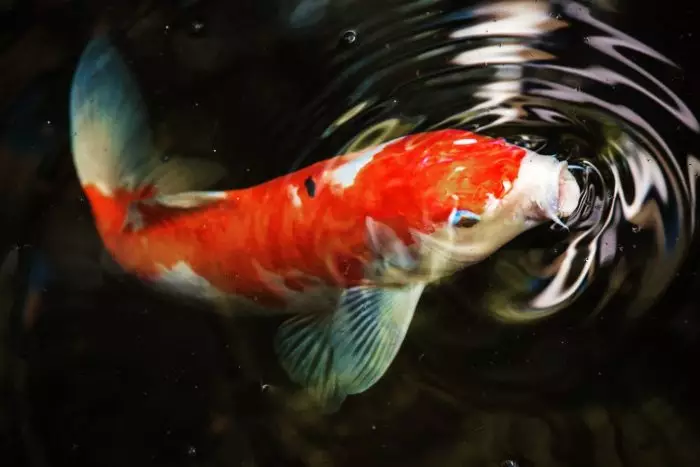
Testing pH
When testing your pond’s pH level, be sure to test it twice on the same day. Once first thing in the morning and once late in the day. Preferably evening and preferably during similar weather conditions.
Why do you need to test the pH in your pond twice?
The reason for testing twice is the algae that will be lurking in your pond. Algae is only active during daylight hours. When it is active, it absorbs large amounts of carbon dioxide found in your pond. Causing your pH to read high. If your pH level looks a bit too high or low, you need to gradually bring it back down, you can do this by using Pond Equaliser.
What is the ideal pond water pH?
It is crucial to keep your pH as neutral as possible, between 7 pH and 8 pH. High alkaline levels in the water will increase the toxicity of any ammonia that exists in your pond. Leading to the possibility of Ammonia poisoning.
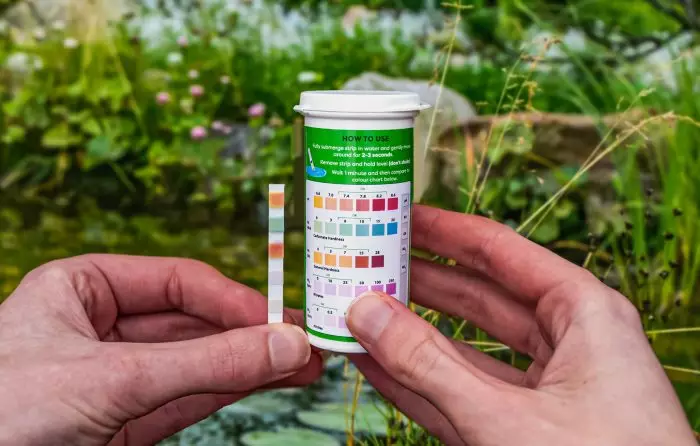
Below is our guide to pond parameters and how to treat the imbalances.
What are KH Levels?
KH is the measure of carbonate hardness in your pond. Carbonate hardness is the amount of calcium carbonate in your pond. Calcium carbonates are very important. They feed the nitrifying bacteria that remove harmful ammonia and nitrates from your pond water. These bacteria are part of your pond’s bio-filter.
Without this, your pond would be highly threatened and rely heavily on your mechanical filtration system. KH levels should be around 125ppm but they can fluctuate safely by about 20ppm either way.
Unfortunately, as with low pH and oxygen levels, the effects of low KH levels can’t be seen by the eye. You may notice that the condition of your pond will deteriorate, Ammonia and Nitrate levels will rise and your pond will become more susceptible to pH swings which will ultimately lead to a pH crash!
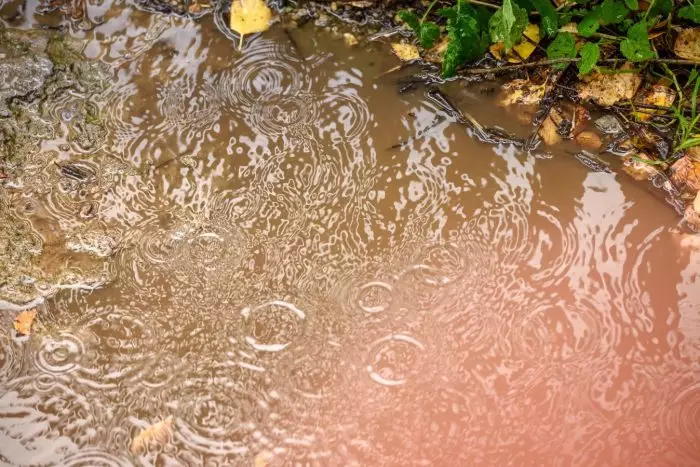
Ammonia, Nitrites and Nitrates
Ammonia is released into your pond when your fish excrete waste. The nitrifying bacteria fed by calcium carbonate then break down the ammonia and turn it into Nitrite. Nitrite is then broken down further, to its final state, Nitrate. Nitrate is the final by-product of Ammonia. All three of these can be dangerous to your fish and should be monitored carefully.
Why should I remove Ammonia from my pond?
Ideally, you should remove any Ammonia in your pond to avoid damaging your fish or breaking down further. Ammonia can cause Ammonia poisoning that can lead to death. Nitrites and Nitrates are not as dangerous. However, if your fish already have Ammonia poisoning they will be weak and susceptible to the irreversible effects of Nitrates.
Ammonia levels should be kept as low as possible. Ideally at 0ppm but they can be okay at 0.5ppm if your pH level is neutral. Remember, the higher your pH, the more toxic Ammonia becomes so it is best practice to keep the level low. Likewise, Nitrites should be kept as low as possible around 0.25ppm but ideally at zero. Finally, Nitrate levels should be around 20-60 ppm.

Phosphate Levels
Phosphate can be present in pond water in many forms. One of them may be soil in planting containers before aquatic plants are planted into the pond, as there are fertilisers in the soil prior to planting to help them grow. Another reason may be tap water that is used to fill up the pond. Phosphate levels are generally quite high in tap water these days to help stop water pipes from corroding.
Does fish food increase phosphate levels?
The other major source is fish food. Fish food contains phosphates, it is an essential part of a fish’s diet. Large amounts of the phosphate will pass through fish and be released as fish waste into your pond.
High Phosphate levels are a major cause of green water and blanket weed in a pond. If phosphate levels are kept low, algae growth will be limited within a pond.
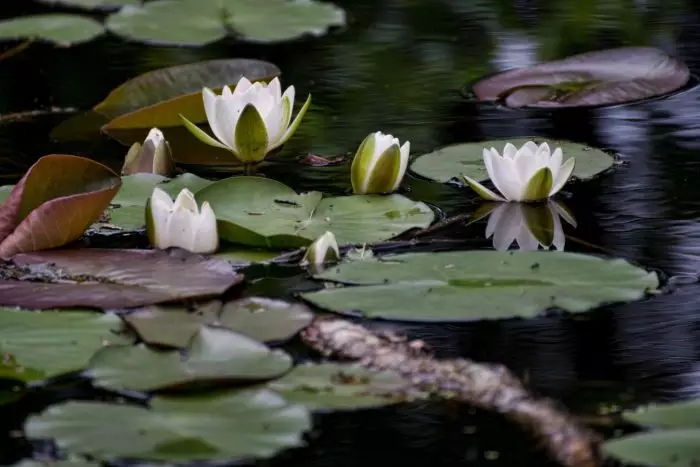
Pond Water Parameters Summary
To summarise, pond water parameters are one of the most important things to monitor in your pond. Use a good quality test kit, the results should be as follows;
- Oxygen – Minimum of 6.0mg/Litre
- pH – Keep your pH level between 7.5 & 8.5
- KH – Keep your level between 95ppm and 150ppm
- Ammonia – Should be at zero but can go up to 0.5ppm depending on the pH level
- Nitrite – Like Ammonia, it should be as low as possible
- Nitrate – Keep Nitrate levels below 20 ppm. Anything over this level will require attention.
- Phosphate – Around 0.05 ppm
You can stabilise pH, KH and ammonia levels with Pond Equaliser and stabilise Nitrate levels with Nitrate Klear.
Related Products
-

Envii Pond Equaliser
£14.99Stabilises the pH & KH in ponds to keep water safe for fish.Add to Basket -

Envii Pond Test Strips
£10.99Easy to use Pond Test Strips measuring 5 key water parametersAdd to Basket

 Call us on 01246 240880
Call us on 01246 240880 Sign-up and receive 10% off
Sign-up and receive 10% off
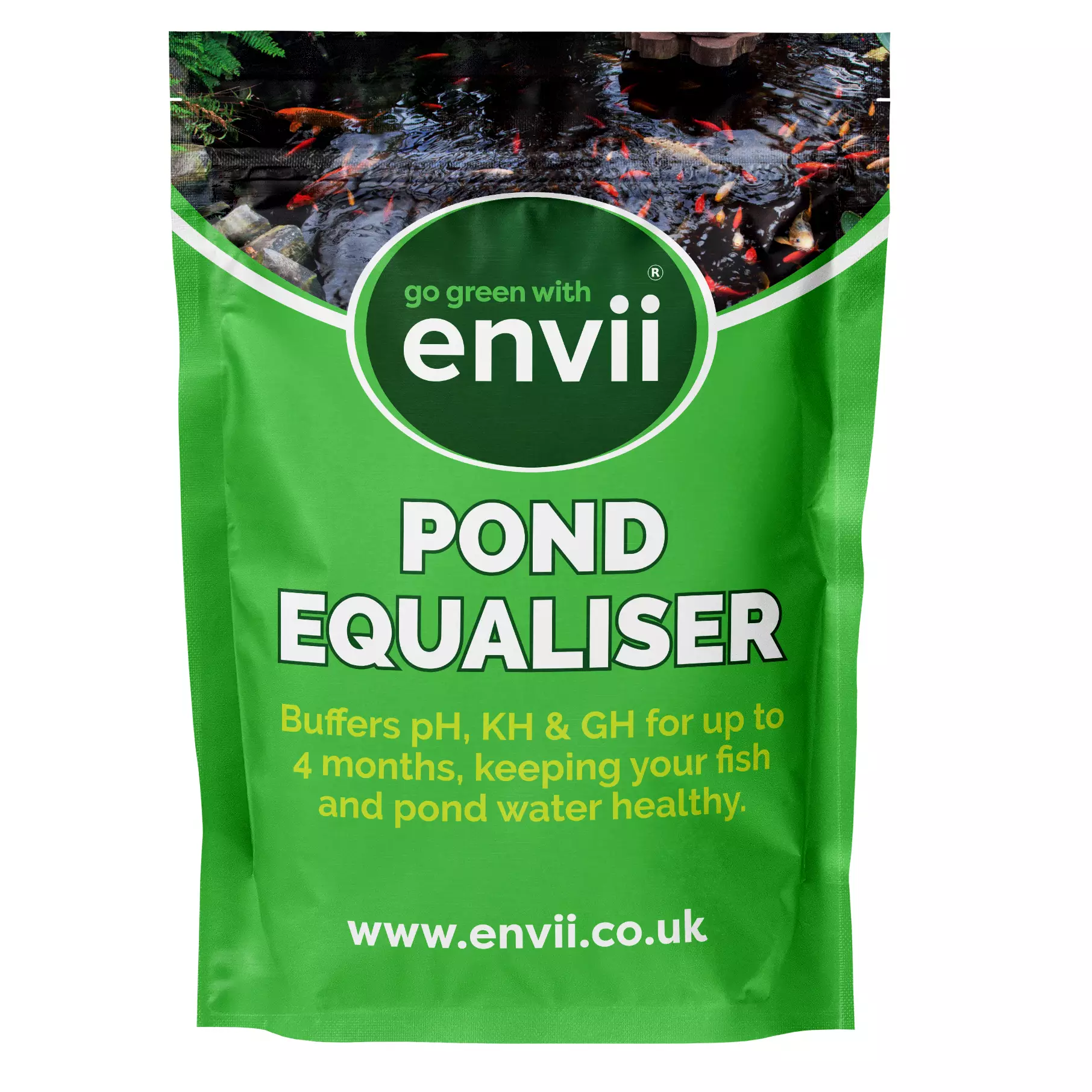
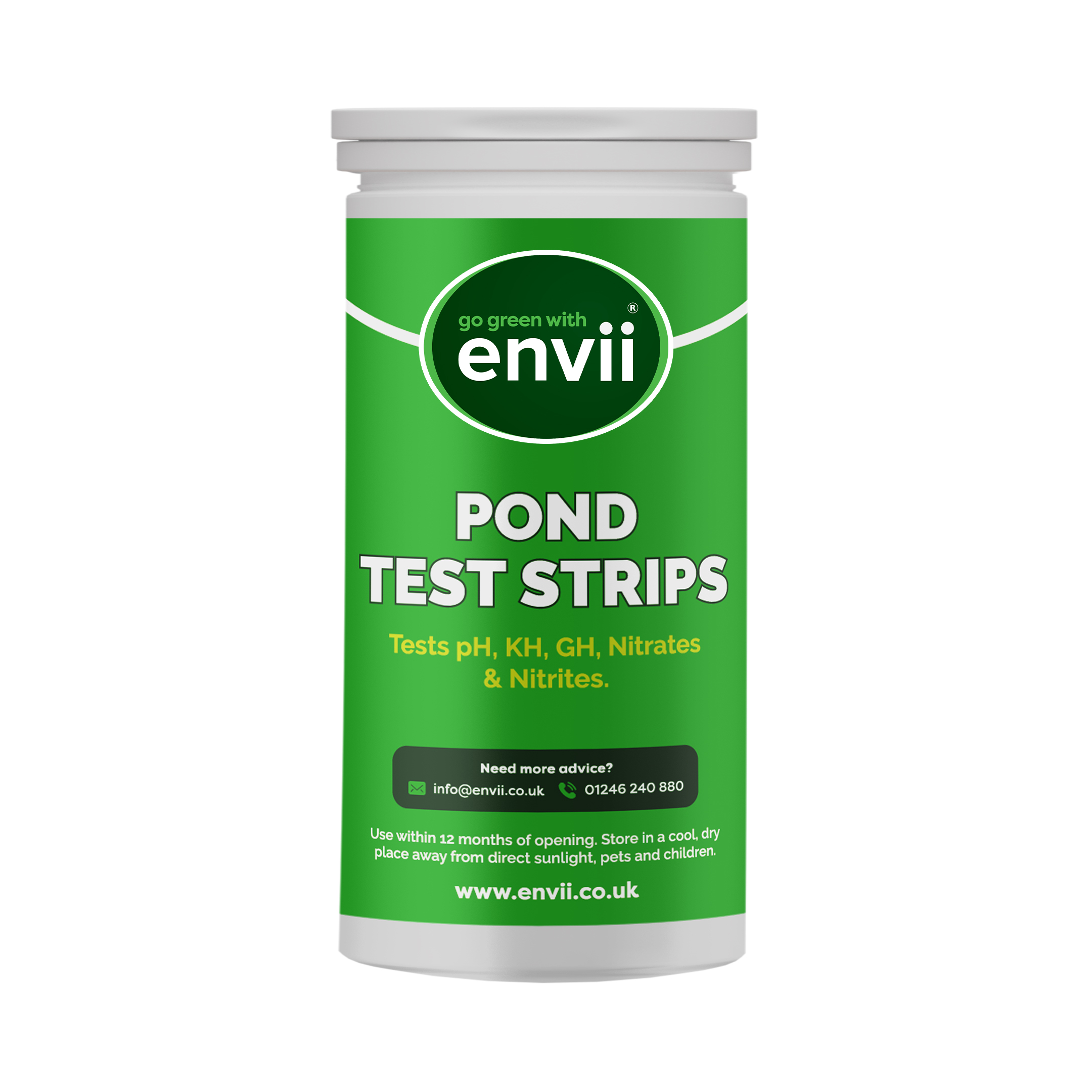
i am suffering by fish pond integrated with poultry farm, many fishes dead, what should i do
getting good results with sludge clear, and pond clear day by day improvement